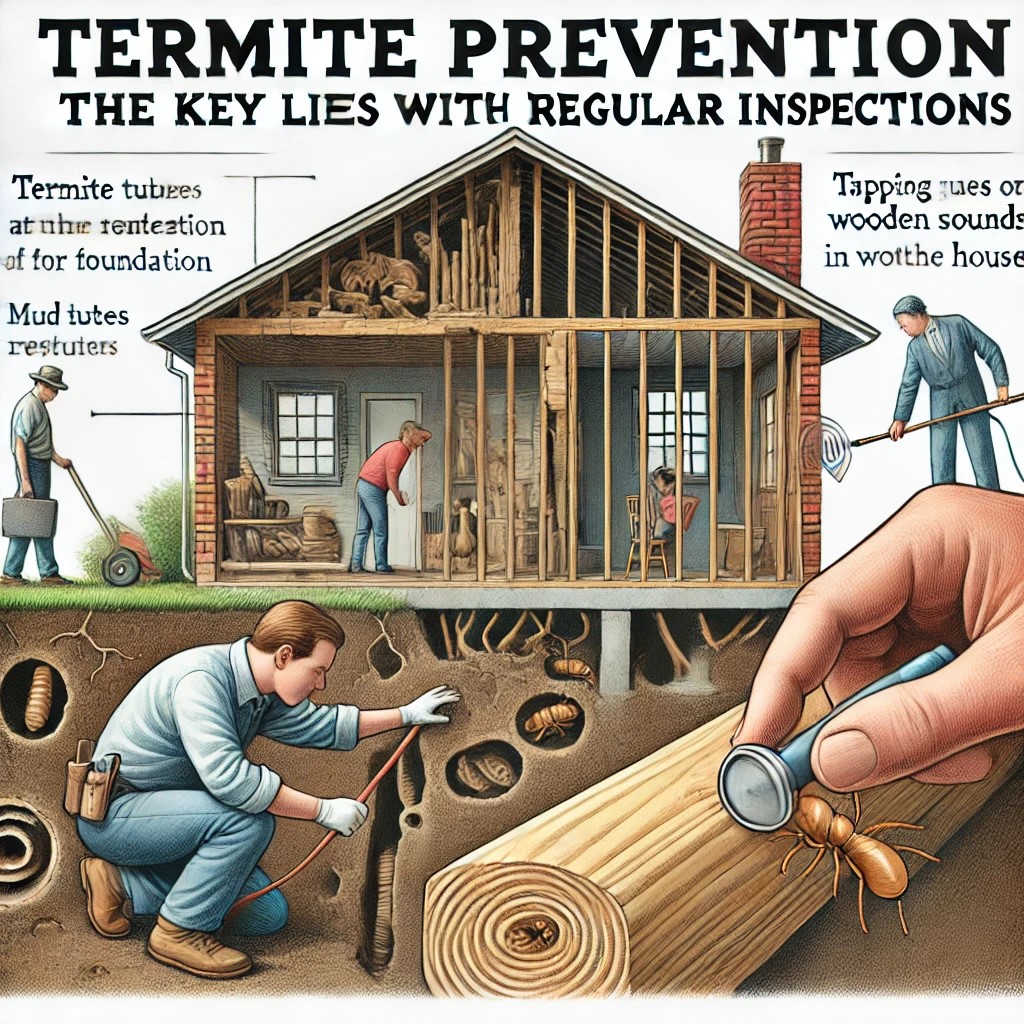
Termites are known to be one of the most destructive pests for homeowners. These small insects can cause significant and costly damage if not detected early. One of the most effective ways to prevent a termite infestation is through regular inspections. Here are some tips on how to conduct regular inspections in your home to detect signs of termites, such as mud tubes and hollow wood.
Why Are Regular Inspections Important?
Termites are silent workers, often going unnoticed until significant damage has been done. Conducting regular inspections allows for early detection of any termite activity, enabling preventive measures to be taken before the problem escalates. Early detection not only saves your home from extensive damage but also reduces the cost and effort required for eradication.
Tips for Conducting a Termite Inspection
1. Inspect the Exterior of Your Home
- Mud Tubes: Subterranean termites build mud tubes as highways between their colony and food sources. These tubes are one of the most obvious signs of an infestation. Inspect the foundations, basements, and any area where wood meets the soil.
- Wood in Contact with the Ground: Wood that touches the ground is more susceptible to termite infestation. Ensure that no structural elements of your home are in direct contact with the soil.
2. Examine the Interior of Your Home
- Hollow Wood: Gently tap beams, door frames, window frames, and other wooden elements. If they sound hollow, it could indicate internal damage caused by termites.
- Bubbling or Uneven Paint: Termites can cause paint on wood to look uneven or bubbled due to underlying damage.
3. Inspect Dark and Damp Areas
- Basements and Attics: These often overlooked areas are ideal for termites due to their darkness and humidity.
- Bathrooms and Kitchens: Check around plumbing fixtures, as moisture can attract termites.
4. Look for Termite Swarms
- Winged Termites: The presence of winged termites, especially near windows or lights, can indicate that a colony is trying to establish itself. This typically occurs in the spring and fall.
5. Pay Attention to Landscaping
- Trees and Shrubs: Termites can also live in trees and shrubs near your home. Inspect these for any signs of damage or termite activity.
What to Do If You Find Signs of Termites
If you find any signs of termite activity during your inspection, it is crucial to take immediate action. Contacting a professional pest control service can help assess the situation and determine the best course of action. Termite experts have the tools and knowledge necessary to effectively treat an infestation.
Conclusion
Termite prevention begins with diligence in regular inspections. By following these tips and being proactive in early detection, you can protect your home from costly damage and preserve its structural integrity. Remember, the key to keeping your home termite-free lies in regular inspection and proper maintenance.
For more information or to schedule a professional inspection, feel free to contact Eco Fauna Pest Control. Stay informed and keep your home safe with our specialized pest control guides and services.
